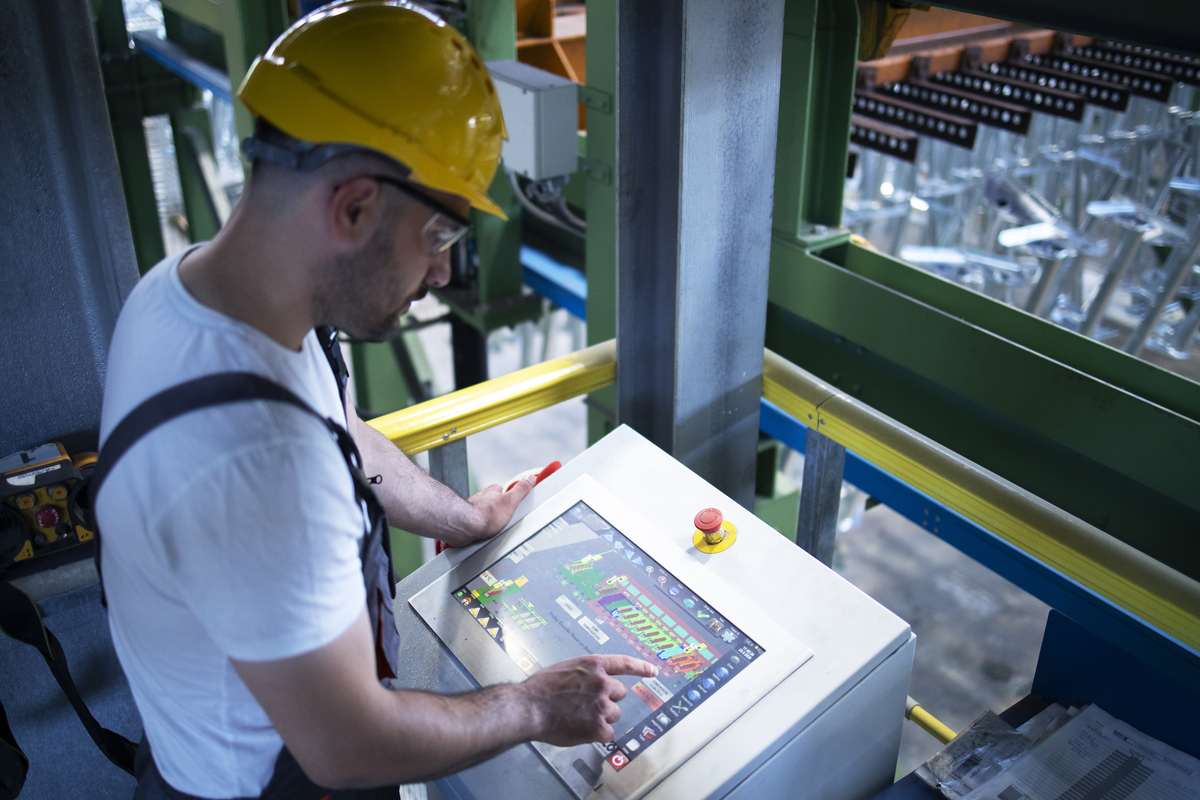Updated by Nazanin Ghodsian, 10/29/2024
Nanotechnology in construction is revolutionizing the industry by enabling precise manipulation of materials at atomic and molecular scales. This cutting-edge field offers creative, environmentally friendly solutions that improve the efficiency, longevity, and design of buildings. Recent developments have resulted in materials strengthened with nanoparticles that offer unmatched strength, flexibility, and durability while lowering environmental impact and maintenance costs.
While thermal insulation and energy-efficient materials are contributing to the creation of sustainable, energy-efficient buildings, nanocoatings and self-cleaning surfaces are becoming potent ways to increase the longevity of structures and lower cleaning costs. Understanding nanotechnology’s growing importance is essential for industry professionals hoping to construct stronger, more environmentally friendly structures as 2024 approaches.
The potential applications of nanotechnology in construction have attracted the attention of researchers and engineers worldwide, resulting in swift advancements in this revolutionary subject. Top Google searches indicate that interest in subjects like “Nanomaterials for sustainable buildings,” “Applications of nanotechnology in construction,” and “advantages of nanotechnology in construction” indicates a growing interest in its real-world applications.
Carbon nanotubes for reinforced concrete, nanosilica for high-performance cement, and nano-titanium dioxide for building facades that reduce pollution are some of the main uses. This thorough guide explores these developments and how the application of nanotechnology in construction has the potential to transform our built environment and open the door to a more sustainable and environmentally responsible future.
Table of Contents
Introduction to Nanotechnology in Construction
With the incorporation of nanotechnology, an emerging field that modifies materials at atomic and molecular sizes, the building industry is going through a paradigm shift. Numerous facets of construction, including building materials, procedures, energy efficiency, and sustainability, could be revolutionized by nanotechnology. It is crucial to investigate the developments and game-changing effects of nanotechnology in construction as we approach the year 2024. Building materials’ strength and durability, energy efficiency, and environmental effect are just a few of the long-standing problems that nanotechnology offers creative solutions. With a focus on the opportunities and difficulties that lie ahead, this essay seeks to offer a thorough overview of the current state of nanotechnology in construction and its possible uses.
Construction is just one of the many areas where nanotechnology, a rapidly developing subject that works with materials and electronics at the nanoscale, is changing the game. Nanotechnology in construction has given a new level of creativity and sustainability by modifying materials at the atomic or molecular level. This article analyzes the potential uses of nanotechnology in construction and presents an overview of its core ideas.

Nanotechnology-Enhanced Building Materials
Nanotechnology’s application in the building sector has sparked the creation of cutting-edge building materials with enhanced functionality, sturdiness, and sustainability. Engineers and scientists can alter materials at the atomic or molecular level using nanotechnology in construction, creating new qualities and functions. We will look at some of the most exciting building materials boosted by nanotechnology that are changing the construction industry in this part.
Self-healing Concrete and Nano-Additives
Concrete, a material that is frequently used in construction, is prone to degradation over time, which jeopardizes the structural integrity of buildings. Nanotechnology-enabled self-healing concrete is a ground-breaking answer to this problem. The concrete matrix can fix cracks on its own by including microcapsules with healing chemicals. These capsules break open when a crack appears, releasing the healing chemicals, which combine with the environment to create a solid filler, therefore effectively sealing the crack. In addition to extending the life of concrete structures, this technology significantly lowers maintenance costs while raising safety.
High-performance Insulation Materials
Traditional insulation materials frequently fail to maintain a thin profile while offering effective thermal insulation. High-performance insulating materials that address these issues have been made possible by nanotechnology in construction. For example, nanostructured materials with exceptionally low thermal conductivity such as aerogels are very good insulators. Aerogels are perfect for energy-efficient buildings due to their remarkable thermal insulation capabilities despite their light weight and thinness.
Nanocoatings for Improved Durability
Building materials can deteriorate over time as a result of exposure to poor environmental conditions, dampness, and contaminants. The endurance and protection of construction materials are increased by nanocoatings, which are thin layers of nanomaterials applied to the surface. These coatings can deflect water, fend off UV rays, and stop the development of mold and bacteria. Additionally, nanocoatings can improve the ability of surfaces to clean themselves, requiring less regular upkeep.
Transparent and Thermally Efficient Glass
The glass industry has also undergone a transformation thanks to nanotechnology in construction, which has sparked the creation of transparent and thermally effective glass materials. By selectively filtering harmful UV and infrared radiation while letting visible light through, nanostructured coatings can filter sunlight. Lowering cooling loads, not only increases a building’s energy efficiency but also shields the occupants from UV-related health hazards.

Nanotechnology in Construction Processes
Nanosensors for Structural Health Monitoring
The structural integrity of buildings and infrastructure is crucial in the construction sector. An innovative approach to real-time structural health monitoring is provided by nanosensors. These tiny sensors, which can be placed in building materials to detect structural changes, tensions, and possible damage, are typically one to several hundred nanometers in size.
By using nanosensors, it is possible to continuously monitor a structure’s health and identify flaws, cracks, and indicators of deterioration early on. Proactive maintenance is made possible by this data-driven methodology, which lowers the possibility of catastrophic breakdowns and increases the longevity of buildings. The safety and sustainability of construction projects can also be improved by using nanosensors to monitor environmental factors including temperature, humidity, and pollution levels.
Suggested article for reading: Construction Monitoring
Nanorobots for Construction and Maintenance
Nanorobots, often referred to as nanobots, are tiny robots created to carry out particular activities at the nanoscale. Nanorobots have enormous potential to improve construction and maintenance procedures in the construction sector. The ability to program these tiny robots to assemble materials at the atomic level would enable incredibly accurate and effective construction methods.
Repair and maintenance work is one of the main uses for nanorobots. They can be used to make repairs in difficult-to-reach places, eliminating the need for expensive and time-consuming manual interventions. In order to keep buildings aesthetically pleasant and free of environmental toxins, nanorobots can also be used for surface treatment and cleaning.
Nanotechnology in 3D Printing
The ability to quickly fabricate intricate buildings thanks to 3D printing, also known as additive manufacturing, has already changed the construction sector. Through the development of nanoparticles and nanocomposites that improve the functionality and robustness of 3D-printed items, nanotechnology in construction has further improved this technique.
The mechanical strength, thermal stability, and wear-and-tear resistance of the materials produced by 3D printing with nanoparticles are enhanced. Additionally, nanotechnology in construction makes it possible to precisely manage a material’s qualities, enabling the development of customized building materials based on the needs of a certain project. This innovation improves the manufactured components’ structural integrity while also using less waste and material, making 3D printing a more environmentally friendly building method.
Nanoadhesives and Bonding Solutions
Construction processes rely heavily on adhesive bonding, which creates solid and long-lasting connections between components. Compared to conventional adhesives, nano adhesives that are created with nanoparticles have improved bonding qualities. Stronger and more dependable connections between different construction materials are produced by the increased surface area of nanoparticles.
Furthermore, hazardous chemicals and volatile organic compounds (VOCs), which are frequently found in conventional adhesives, can be used less frequently in nano adhesives, making them more environmentally friendly. This factor fits well with the increased emphasis on sustainability and environmentally friendly methods in the construction sector.

Advancements in Nanotechnology-Based Energy Efficiency
Nanotechnology in Solar Cells and Photovoltaics
Solar cells and photovoltaics have significantly improved because of nanotechnology, becoming more efficient and economical. Researchers have improved light absorption, charge separation, and electron transport in solar cells by utilizing nanomaterials, leading to greater energy conversion efficiencies. Quantum dots are a popular type of nanomaterial used in solar cells. These tiny semiconductor nanoparticles have variable bandgaps that allow for a wider spectrum of light wavelengths to be absorbed, increasing the amount of energy that is converted overall.
Nanogenerators for Energy Harvesting
At the nanoscale, nanogenerators are machines that can transform mechanical energy into electrical energy. For self-powering small electronic devices, sensors, and potentially wearable technologies, these nanogenerators hold enormous promise. Nanogenerators use the piezoelectric and triboelectric capabilities of nanoparticles to efficiently harvest energy from pressure, vibration, and other external forces.
By utilizing the ambient energy present in typical surroundings, nanogenerators have the potential to transform energy sustainability. Low-energy electronic gadgets might be powered by activities like walking or keyboarding, which would lessen the need for conventional batteries and their negative effects on the environment.
Energy-Responsive Smart Windows
Innovative developments in nanotechnology in construction have led to significant improvements in energy-responsive smart windows, commonly referred to as dynamic windows or switchable windows. These windows can change their optical properties in response to outside stimuli like light, heat, or electricity by adding nanomaterials like nanoparticles or liquid crystal-based nanostructures.
These intelligent windows contribute to energy conservation and cost savings by reducing the demand for artificial lighting and air conditioning. They can also improve occupant comfort by controlling indoor temperatures and reducing UV exposure.
Environmental Impact and Sustainability
Reduced Carbon Footprint
Nanotechnology in construction has the ability to significantly reduce the carbon footprint associated with building materials and processes, which is one of its most important contributions to the construction sector. Construction materials can be created to have improved qualities while using less material by using nanomaterials like carbon nanotubes and nanoparticles. Additionally, nanotechnology in construction enables the development of thin, strong materials that reduce transportation emissions during construction and increase the durability of structures, reducing the frequency of repairs and replacements.
Waste Reduction and Recycling
In the construction industry, recycling and waste reduction are both vitally important. Researchers have discovered ways to make conventional building materials more resilient to wear and tear by incorporating nanoparticles into them. As a result, these materials last longer, need replacements less frequently and produce less waste. Furthermore, nanotechnology-based concrete additives like nano-silica and nano-titania improve the toughness and longevity of concrete, reducing the amount of construction waste brought on by early material failure.
Water Purification with Nanotechnology
A major global concern is access to clean water, and nanotechnology holds out hope for practical applications in the construction sector. Various construction processes that call for high-quality water might benefit from the efficient removal of contaminants, heavy metals, and microorganisms from water sources made possible by nanomaterials like nano filters and nanoparticles. Nanotechnology in construction also makes it possible to create surfaces that are self-cleaning and anti-fouling, which reduces the need for regular maintenance and chemical cleaning in water treatment systems.

Challenges and Future Outlook
Although nanotechnology offers the construction industry some promising new developments, there are still a number of obstacles that need to be overcome before it can fully realize its potential. Exposure to nanoparticles raises safety and health concerns, which necessitate rigorous risk assessments and strict safety standards to safeguard employees and end users. Furthermore, the absence of uniform laws for the use of nanotechnology in buildings hinders its wider adoption and creates uncertainty for stakeholders. Another key problem is balancing the integration of nanotechnology with building costs because some advanced nanomaterials can be pricey and affect the overall viability of projects.
Despite these difficulties, the outlook for nanotechnology in the construction sector is still very positive. Many of these obstacles can be solved as research advances and technology becomes more sophisticated. The successful application of nanotechnology solutions will be made possible by appropriate safety regulations and precautionary measures that will provide a safe working environment. The implementation of nanotechnology in construction will be governed by standards that will be established through cooperation between stakeholders in the industry, academics, and governing organizations.
There is a lot of promise for nanotechnology in construction. Beyond 2024, advancements are anticipated in this subject as researchers dig deeper, resulting in even more creative and sustainable solutions. Enhancements to nanomaterials and processes will result in greater energy efficiency, reduced waste production, and a radical new approach to sustainability in the building sector. Additionally, the combination of nanotechnology, artificial intelligence, and other cutting-edge technologies will result in smart infrastructure and buildings that will improve functionality, flexibility, and environmental responsiveness.
Conclusion
In conclusion, a new era of creativity, sustainability, and efficiency has been ushered in by the use of nanotechnology in construction. The improvement of building materials, construction methods, and energy efficiency has shown promising outcomes when using nanomaterials and nanotechnological solutions. These developments, which range from self-healing concrete to energy-responsive smart windows, have the potential to completely alter how we create and maintain structures.
It is clear as we approach 2024 that nanotechnology is not merely a fad but rather a crucial engine of advancement in the building industry. To effectively utilize the promise of nanotechnology in construction, however, issues like safety worries, regulation, and economic consequences must be addressed.
Continuous research and cooperation between regulatory agencies, businesses, and academia are essential to understanding the entire scope of nanotechnology’s effects. Nanotechnology in construction can significantly contribute to building a greener and more resilient future by encouraging sustainable practices, lowering carbon footprints, and decreasing waste.
FAQs
What is Nanotechnology in Construction, and Why is it Significant?
- Answer: Nanotechnology in construction refers to the application of nanoscale technologies to improve building materials, enhance energy efficiency, and boost sustainability in construction. Stronger, more resilient, and ecologically friendly building solutions are produced by altering materials at the atomic or molecular level. This technology is very important since it provides novel solutions to persistent problems in the industry, like energy consumption and material deterioration, which will ultimately change the direction of construction.
How does Self-healing Concrete Work, and what Benefits does it Offer?
- Answer: Nanoscale capsules containing therapeutic ingredients are added to self-healing concrete. These capsules burst open to release the agents, which then react with the surrounding environment to close the crack. This technology offers a ground-breaking answer to one of the most common durability problems in construction by extending the life of concrete structures, lowering maintenance costs, and improving overall safety.
What Types of Insulation Materials are Enhanced by Nanotechnology, and how do they Improve Energy Efficiency?
- Answer: Aerogels and other high-performance insulating materials have been created using nanotechnology. These materials are lightweight and thin, and because of their low heat conductivity, they offer superior insulation. These materials contribute to energy-efficient, sustainable buildings by reducing the need for heating and cooling through increased thermal efficiency.
How do Nanocoatings Improve the Durability and Maintenance of Building Materials?
- Answer: Surfaces can be made resistant to water, UV light, and microbial development by applying thin protective layers called nanocoatings. By limiting environmental harm, lowering maintenance requirements, and incorporating self-cleaning qualities, they increase material life. This improvement in durability is particularly beneficial in places that are subjected to severe weather and pollution.
What Role do Nanosensors Play in Structural Health Monitoring?
- Answer: Nanosensors are minuscule sensors incorporated into construction materials to track the structural integrity of the material. They provide early intervention and preventive maintenance by identifying stress, cracks, and possible damage. Building longevity and safety are improved by this data-driven monitoring, particularly in infrastructure that needs continuous structural integrity.
What are some Challenges Associated with Implementing Nanotechnology in Construction?
- Answer: The high cost of sophisticated nanomaterials, the requirement for safety precautions to control exposure to nanoparticles, and the absence of uniform rules are some of the obstacles to nanotechnology’s revolutionary potential. To guarantee the safe, economical, and broad use of nanotechnology in building projects, these issues must be resolved.
Suggested article for reading:
Construction Robotics; 2024 Guide
Nearly Zero Energy Buildings (NZEB); Ultimate Guide 2024
9 Smart Building Examples; 2024 Reviews
Discovering the Top 7 Eco Friendly Building Projects
Reduce Carbon Emission in Construction; Ultimate Guide in 2024
Sustainable Construction Technology; Ultimate Guide in 2024
11 Top Commercial Projects in Iran
What is Eco Friendly Construction & Why is it important? 2024 Guide
Resilient Construction; 2024 Guide
Top 23 Famous Women Architects in World; 2024 Review
important construction technology in 2024
7 Important Building Technology Ideas for 2024
Resources:
Institution of Occupational Safety and Health | Nanowerk | Nanography Nano Technology
Journal articles:
- Al-Akhras, N. M., & Isaac, S. (2020). Nanotechnology Applications in Construction. In Nanotechnology and Construction 4.0 (pp. 1-25). Springer, Cham.
- Azeez, S., Koduru, J. R., Ponnamma, D., & Al-Maadeed, M. A. (2020). Health and environmental aspects of nanotechnology in construction. In Handbook of Research on Environmental and Human Health Impacts of Nanotechnology (pp. 505-529). IGI Global.
- Cao, Y., Zhang, Y., Chau, K. W., & Pecht, M. (2021). Nanotechnology in the construction industry: A review on energy, self-healing, and environmental applications. Energy and Buildings, 234, 110776. doi:10.1016/j.enbuild.2021.110776
- Cao, Z., Wu, L., Li, Y., & Jiang, X. (2022). Nanotechnology and nanomaterials in construction: A review of recent developments and future prospects. Construction and Building Materials, 324, 128902. doi:10.1016/j.conbuildmat.2022.128902
- Fiochetti, M. F., Kuczera, D., de Freitas, V. P., & Fialho, L. L. (2021). Nanotechnology for sustainable construction: A review on nanomaterials, applications, and challenges. Environmental Science and Pollution Research, 28(8), 9785-9804. doi:10.1007/s11356-021-12923-3.
- Gopalakrishnan, K., Dhandapani, V., & Abbasi, T. (2020). Nanotechnology in construction – A review. Materials Today: Proceedings, 37, 1045-1050. doi:10.1016/j.matpr.2020.06.695.
- Hussain, C. M., & Kumar, S. (2021). Nanotechnology in the Construction Industry: Current Status, Applications, and Future Potential. Nanotechnology in Civil Infrastructure, 23-50.
- Khan, M. S., Abbas, N., Akram, A., & Wu, J. (2020). Recent advancements and challenges of nanotechnology in the construction industry. Journal of Cleaner Production, 121736. doi:10.1016/j.jclepro.2020.121736
- Khare, R. (2021). Nanotechnology in Construction Industry: A Review. Nanomaterials and Nanotechnology, 11(1), 23-38.
- Kumar, A., Biswas, S., & Garg, P. (2020). A Comprehensive Review on Nanotechnology in Construction Industry. Journal of Building Engineering, 31, 101265.
- Ouyang, C., Cao, Y., Liu, H., Yuan, Y., Xing, F., & Wang, X. (2021). A Review of Self-Healing Concrete: Mechanism, Preparation, Application, and Advancements. Construction and Building Materials, 270, 121435.
- Raghavan, V., & Tan, J. (2022). Nanotechnology-Enabled Energy Efficiency in Buildings: Current Trends and Future Prospects. Renewable Energy Reviews, 98, 354-369.
- Rizwan, M., Reddy, M. M., & Nagaraj, B. (2020). Nanotechnology in civil engineering: a review. Materials Today: Proceedings, 33, 3241-3247.
- Shannigrahi, S., Choudhury, N. R., Dash, S., & Mishra, R. K. (2021). A review on nanotechnology in construction materials and their applications. Materials Today: Proceedings, 39, 1940-1947. doi:10.1016/j.matpr.2020.10.010.
- Siddique, R., & Raj, A. S. (2020). Nanotechnology in construction: A review. Construction and Building Materials, 250, 118984.
- Taha, I., Abdelaziz, M., Hassan, S., Fathy, M., & Seleem, M. (2022). Development of Highly Efficient Aerogel-Based Nanocomposites for Sustainable Building Insulation. Journal of Building Engineering, 45, 103229.
- Wang, L., Zhang, Y., & Tang, Y. (2020). Application of Nanotechnology in Environmental Protection and Pollution Treatment. In Advances in Environmental Materials, 173-190. Springer, Singapore.
- Zhang, L., & Wang, J. (2023). Sustainable Construction through Nanotechnology: Challenges and Opportunities. Journal of Cleaner Production, 301, 128940.
- Zhang, Y., Fu, Y., Guo, Z., & Chen, Z. (2021). Nanotechnology applications in sustainable construction: A comprehensive review. Construction and Building Materials, 301, 124156. doi:10.1016/j.conbuildmat.2021.124156
For all the pictures: Freepik



